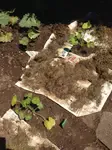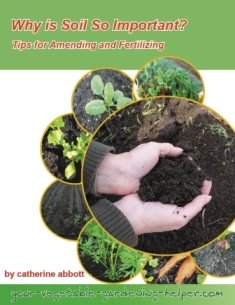Why is soil testing important?
Soil testing is a crucial step in ensuring the success of your vegetable garden. By understanding the composition of your soil, you can make informed decisions about which vegetables to plant, what fertilizers to use, and how to improve the overall health of your garden. In this article, we will discuss the importance of soil testing for vegetable gardens and provide a step-by-step guide on how to test your soil effectively.
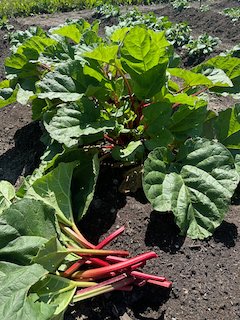 Soil testing for a happy garden
Soil testing for a happy gardenThere are fairly inexpensive soil test kits found in most nurseries. I find these tests very subject to personal interpretation however for a first time home gardener this can be a starting point in getting a general idea of what your soil pH and fertility is.
For a more accurate and scientific approach send a soil sample to a soil testing laboratory in your area. This will cost more money however the results will give you more accurate and detailed information on your garden soil.
Importance of Soil Testing for Vegetable Gardens:
1. Nutrient Levels: Different vegetables have varying nutrient requirements. By testing your soil, you can determine the levels of essential nutrients such as nitrogen, phosphorus, and potassium. This information will help you choose the right fertilizers to ensure optimal growth and yield of your vegetables.
2. pH Levels: The pH level of your soil plays a significant role in the availability of nutrients to plants. Most vegetables prefer a slightly acidic soil with a pH range of 6.0 to 7.0. By testing the pH of your soil, you can adjust it accordingly to create the ideal growing conditions for your vegetables.
3. Soil Structure: The texture and structure of your soil also impact the growth of your vegetables. Soil testing can help you identify issues such as compaction, drainage problems, or excessive clay content. This information will guide you in improving the soil structure through amendments such as compost or organic matter.
4. Disease and Pest Resistance: Certain soil conditions can make your vegetable garden more susceptible to diseases and pests. By conducting a soil test, you can identify potential risks and take preventive measures to protect your plants.
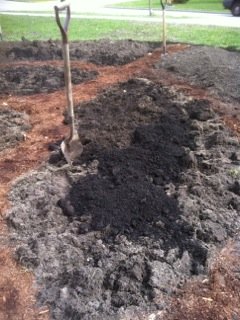 Soil testing when preparing your soil
Soil testing when preparing your soilHow to Test Your Soil for Vegetable Gardens:
1. Collect Soil Samples: Use a soil auger or shovel to collect soil samples from different areas of your garden. Mix the samples in a clean container, removing any debris such as rocks or roots.
2. Prepare the Soil: Air-dry the soil samples and remove any large clumps. Break up the soil into smaller pieces and remove any organic matter or debris.
3. Conduct the Test: You can either use a DIY soil testing kit or send your soil samples to a professional laboratory for analysis. Follow the instructions provided in the kit or by the lab to obtain accurate results.
4. Interpret the Results: Once you receive the soil test results, pay attention to the nutrient levels, pH, and any recommendations provided. Adjust your gardening practices based on the findings to optimize the health and productivity of your vegetable garden.
5. Implement Recommendations: Based on the soil test results, amend your soil as needed by adding organic matter, fertilizers, or adjusting the pH levels. Follow the recommendations provided to create the ideal growing environment for your vegetables. If your soil has nutrient deficiencies, you will need to add in different types and amounts of soil fertilizers to improve your soil fertility.
Acidic or Alkaline Soil Results:
Your soil pH:
This is a numerical symbol that tells how much acid or alkaline is in your soil. The pH scale range is zero (which is acidic) to 14 (which is alkaline) with 7 being neutral.
Most vegetables grow best between 6 and 7, which is slightly acidic.
If soil is too acidic it will be infertile; if too alkaline the soil becomes toxic and will poison plants. Areas with lots of rainfall likely have acidic soil as rain tends to wash away calcium and magnesium as well as other nutrients.
Areas with less rain are usually more alkaline.
If you have acidic soil:
Lime is used to increase the pH if you have acidic soil. There are two basic types of lime - agricultural lime which only contains calcium and dolomite lime which contains both calcium and magnesium.
Most home gardeners can usually use either; dolomite is often cheaper and more accessible. An in depth soil test will tell you if your soil already has optimum magnesium and if it does it would be best to use the agricultural lime.
- Sandy soil add 5 pounds per 100 square feet
- Loam soil add 6 pounds per 100 square feet
- Silt or Clay soil add 8 pounds per 100 square feet
How much do you add in? These are approximate amounts to raise the pH by 1 point.
If you have alkaline soil:
- Sandy soil add 1 pound per 100 square feet
- Loam soil add 1.5 pounds per 100 square feet
- Silt or clay soil add 2 pounds per 100 square feet
To correct soil that is too alkaline you will need to add powdered sulfur.
How much do you add in? These are approximate amounts to lower the pH by 1 point.
Here is more information on the above types of soil.
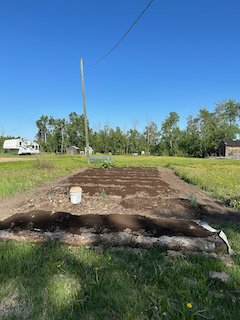 Soil beds for growing veggies
Soil beds for growing veggiesBoth lime and sulfur are considered soil conditioners
It is important to add either separately from soil fertilizers; a few weeks to a month before is best. When adding lime and sulfur to your garden beds make sure you rake it evenly into the soil.
If your soil is extremely acidic or alkaline make an application in the spring and another one in the fall so as not to give the soil too much all at once. It can take a few seasons to get to the optimum number you want
In conclusion, soil testing is a valuable tool for vegetable gardeners to understand their soil's composition and make informed decisions about plant nutrition and soil health. By following the steps outlined in this article, you can ensure the success of your vegetable garden and enjoy a bountiful harvest of fresh,
Return from Soil Testing to Vegetable Garden Soil
Recent Articles
-
Organic Gardening soil amendments - List of material?
Aug 09, 25 10:57 AM
What materials are best used as organic gardening soil amendments? -
Tips for disease control in your vegetable garden
Jul 14, 25 11:15 AM
Easy tips for disease control to keep your vegetable growing its best. -
Joy of vegetable Gardening
Jul 14, 25 11:01 AM
Everything you need to know is right here to have Joy of Vegetable Gardening
